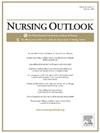Structural, systemic, and political barriers to quality health care during the childbearing continuum: An American Academy of Nursing consensus paper
IF 3.7
2区 医学
Q1 NURSING
引用次数: 0
Abstract
The United States has persistent and growing rates of severe maternal morbidity and maternal mortality. Yet, the majority of pregnancy-related complications and deaths are preventable. Social, cultural, political, and system barriers, structural racism, and the uneven distributions of points of access to care all contribute to the disparities in maternal outcomes. Populations that experience disproportionately poor maternal health outcomes due to unequal access to perinatal care include racial and ethnic groups, sexual and gender minorities, people with disabilities, and persons who are incarcerated. Using a health equity perspective, the interacting factors that lead to avoidable pregnancy-related illness and death are discussed. Recommendations to improve access, care, and outcomes for childbearing persons are presented.
结构性、系统性和政治障碍在生育连续期间的高质量卫生保健:美国护理学会共识文件。
美国的孕产妇严重发病率和死亡率持续上升。然而,大多数与妊娠有关的并发症和死亡是可以预防的。社会、文化、政治和制度障碍、结构性种族主义以及获得医疗服务的地点分布不均,都是造成孕产妇结局差异的原因。由于获得围产期护理的机会不平等,孕产妇健康状况不佳的人口包括种族和族裔群体、性和性别少数群体、残疾人和被监禁者。从健康公平的角度,讨论了导致可避免的妊娠相关疾病和死亡的相互作用因素。提出了改善对育龄人员的获取、护理和结果的建议。
本文章由计算机程序翻译,如有差异,请以英文原文为准。
求助全文
约1分钟内获得全文
求助全文
来源期刊

Nursing Outlook
医学-护理
CiteScore
6.20
自引率
7.00%
发文量
109
审稿时长
25 days
期刊介绍:
Nursing Outlook, a bimonthly journal, provides innovative ideas for nursing leaders through peer-reviewed articles and timely reports. Each issue examines current issues and trends in nursing practice, education, and research, offering progressive solutions to the challenges facing the profession. Nursing Outlook is the official journal of the American Academy of Nursing and the Council for the Advancement of Nursing Science and supports their mission to serve the public and the nursing profession by advancing health policy and practice through the generation, synthesis, and dissemination of nursing knowledge. The journal is included in MEDLINE, CINAHL and the Journal Citation Reports published by Clarivate Analytics.
 求助内容:
求助内容: 应助结果提醒方式:
应助结果提醒方式:


